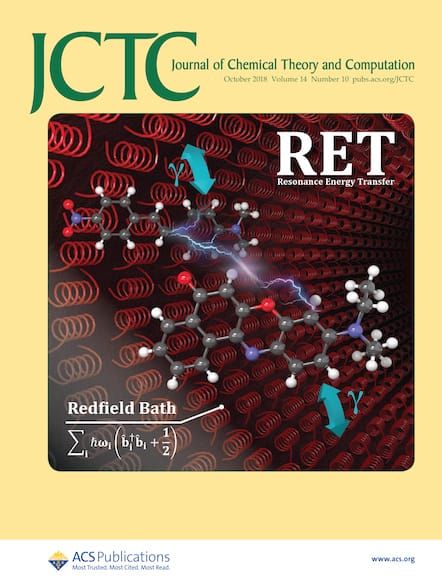The Grand Canonical General-Purpose Reactivity Indicator: A Conceptual DFT Approach to Predict Molecular Reactivity and Experimental Electrophilicity and Nucleophilicity Scales.
IF 5.5
1区 化学
Q2 CHEMISTRY, PHYSICAL
引用次数: 0
Abstract
The Grand Canonical General-Purpose Reactivity Indicator (GC-GPRI) is introduced as a tool for predicting reactivity and for discerning the relative electrophilicity and nucleophilicity of electrophiles and nucleophiles, respectively. The GC-GPRI is derived within the zero-temperature grand canonical ensemble conceptual density-functional theory (CDFT) framework using a perturbative approach. In this model, the electrophile-nucleophile interaction energy is modeled by perturbations in the chemical and external potentials of the isolated species. The GC-GPRI accurately identifies the most reactive hard and soft atoms in complex molecules with multiple reactive sites. This model also reproduces experimental electrophilicity and nucleophilicity scales for 21 electrophiles and 20 nucleophiles, with R2 correlations of 0.98 and 0.94, respectively.大标准通用反应性指标:预测分子反应性和实验亲电性和亲核性尺度的概念DFT方法。
大规范通用反应性指标(GC-GPRI)被引入作为预测反应性的工具,并分别用于识别亲电试剂和亲核试剂的相对亲电性和亲核性。利用微扰方法在零温度大正则系综概念密度泛函理论(CDFT)框架内推导了GC-GPRI。在这个模型中,亲电-亲核相互作用能是通过孤立物质的化学和外部电位的扰动来模拟的。GC-GPRI能够准确识别具有多个反应位点的复杂分子中最具活性的硬原子和软原子。该模型还重现了21种亲电试剂和亲核试剂的实验亲电和亲核尺度,R2相关系数分别为0.98和0.94。
本文章由计算机程序翻译,如有差异,请以英文原文为准。
求助全文
约1分钟内获得全文
求助全文
来源期刊

Journal of Chemical Theory and Computation
化学-物理:原子、分子和化学物理
CiteScore
9.90
自引率
16.40%
发文量
568
审稿时长
1 months
期刊介绍:
The Journal of Chemical Theory and Computation invites new and original contributions with the understanding that, if accepted, they will not be published elsewhere. Papers reporting new theories, methodology, and/or important applications in quantum electronic structure, molecular dynamics, and statistical mechanics are appropriate for submission to this Journal. Specific topics include advances in or applications of ab initio quantum mechanics, density functional theory, design and properties of new materials, surface science, Monte Carlo simulations, solvation models, QM/MM calculations, biomolecular structure prediction, and molecular dynamics in the broadest sense including gas-phase dynamics, ab initio dynamics, biomolecular dynamics, and protein folding. The Journal does not consider papers that are straightforward applications of known methods including DFT and molecular dynamics. The Journal favors submissions that include advances in theory or methodology with applications to compelling problems.
 求助内容:
求助内容: 应助结果提醒方式:
应助结果提醒方式:


